-
Repelling Mice With Smells They Hate
October 3, 2021
We all agree that the most straightforward way of controlling rodent population in our homes is using poison baits like…
Table of Contents
We all agree that the most straightforward way of controlling rodent population in our homes is using poison baits like the highly toxic synthetic pesticides and rodenticides. This method of controlling rodents is however considered to have a number of disadvantages:
- It is only a temporary control measure as rodents re-infest the home after sometime. Killing rodents with poison may lead to a scenario where a small population is left with huge food resources. Plenty of food provides ground for reproduction and in turn their numbers increase to unmanageable levels.
- The pesticide formulation may stop working against the rodents due to resistance. It is common knowledge that pests develop resistance to pesticides and rodents are no exception.
- Rodents may easily learn to avoid the bait in preference for familiar food alternatives.
- Using poison baits has the risk of inadvertently poisoning non-target animals including our pets and household members.
It is therefore important to device alternatives that pose no health risk to us but capable of deterring rodents from our homes. But why should you be so much concerned by the presence of these animals in your homes? Wouldn’t it be easier to just coexist peacefully with them?
Rodents such as rats and mice are considered pests because their presence in our living places have significant economic and health consequences. We therefore cannot ignore their presence in and around our homes.
- They cause structural damage to our homes by gnawing on wood
- Rats and mice create fire hazards by gnawing on electrical installations
- They are vectors of viruses, bacteria and ectoparasites hence a public health hazard
- Rodents feed on and destroy stored crops impacting our food security
- They contaminate our food through their urine and droppings hence impact our food safety
The use of natural solutions like non-chemical repellents has the potential of keeping mice and rats away from our homes. They have been touted as effective alternatives to lethal chemical pesticides. These repellents have unpleasant taste and smell that the mice and rats hate. The strong scent from these repellents cause irritation in mice. The irritation may cause these animals to feel sick and develop learned smell aversions. They would associate the unpleasant smell with subsequent illness or irritation and avoid areas with such smells.
Fragrances That Mice And Rats Hate
Essential Oils

The use of natural solutions to get rid of mice and rats is desirable where the use of chemical pesticides poses danger to non-target animals or to ourselves. Available commercial rodent repellents are either made using chemicals or natural extracts with a blend of essential oils and other additives.
Essential oils have become a popular natural repellent used to get rid of mice from homes. Mice and rats hate the smell of these products although not everyone agrees that essential oils are effective rodent repellents.
Peppermint Oil
This is a natural extract from peppermint leaves with a scent that is pleasant to human beings but irritating to mice. Besides its use as a flavouring agent in foods and beverages as well as a fragrance in cosmetics, it also used to repel mice from homes.
To use this product as a mice deterrent you need:
- 2 tea spoons of peppermint oil
- A cup of water
- 3 drops of dish soap
- One spray bottle
Steps to prepare this repellent at home:
- Mix the peppermint oil, water and dish soap together in the spray bottle
- Soak cotton balls in a few drops of the prepared peppermint oil solution
- Place the soaked cotton balls where there is evidence of mice activities
- Monitor the cotton balls and replace them when the scent fades
Tea Tree Oil
The strong scent of tea tree oil is an effective rodent repellent that keeps them away from your home.
Eucalyptus Oil
Eucalyptus oil is one of the most effective essential oils you can use to get rid of mice from your house.
Lemon Oil
Lemon oil has a citrus fragrance which will repulse rodents from your home.
Cayenne Pepper/Chili Oil/Powder
These are hot chilis mostly used by humans to flavour food. We can harness their strong smell to keep mice away from our homes. Identify areas that are frequented by mice and sprinkle a generous amount of cayenne pepper, chili oil or powder.
Cloves and Clove Essential Oil
Cloves are dried aromatic flower buds of the clove tree. The spicy flavour of whole cloves and clove oil makes them a natural mice repellent.
Wrap cloves in a cloth or soak cotton balls in clove essential oil and place them around the home in places where mice use to gain entry.
Cedarwood Oil
Cedarwood oil contains phenols with strong scents that repel mice and other pest bugs.
Alternative Repellents
Dryer Sheets
Dryer sheets are good for depositing strong smells that can deter mice from your home. Identify areas in the house where mice are common and place dryer sheets in those places. You can also look out for mice entry holes and stuff them with dryer sheets. Never forget to replace or remove them when the scent fades.
Irish Spring Soap
This is an American brand of deodorant soap whose smell can be harnessed to keep the mice away. Grate 2 – 3 bars of Irish spring soap to have a reasonable pile of shavings. Identify the places frequented by mice and sprinkle the shavings around those areas.
Rotten Onions
You can harness the power of the pungent smell of rotting onions to deter mice from your home.
Baking Powder
Sprinkling a good amount of baking powder in areas frequented by mice should help to get rid of them after a couple of days.
Moth Balls
Moth balls produce naphthalene vapour which has a strong smell and is irritating to mice and rats and can therefore be used to repel these rodents. However, naphthalene is only effective at a higher concentration, which can turn out to be toxic to our pets and household members.
Apple Cider Vinegar and Water
Apple cider vinegar is acidic and has a smell that naturally repels pests such as rodents. You can make a rodent repellent spray by mixing apple cider vinegar with water.
Generally, in any essential oil of your choice, soak cotton balls and stuff them in cracks, crevices and holes associated with rodents. Monitor the cotton balls regularly and replace them when they dry out.
Other Mice And Rat Control Options
Other than using poisons such as rodenticides and repellents to get rid of mice and rats from your home, you can also use the following options to control rodents around your home:
Traps
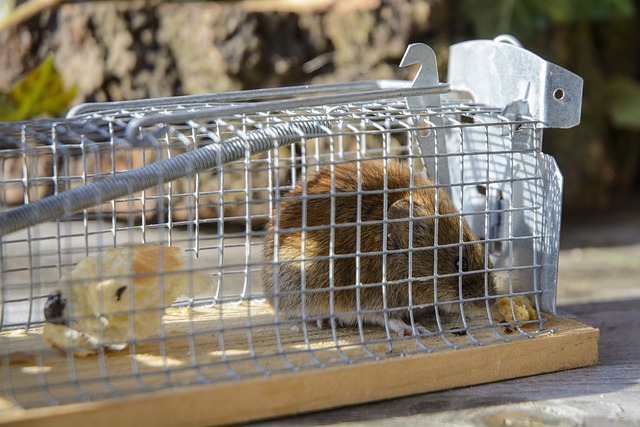
Mouse traps include snap traps and live traps. You can use these traps to control mice and rats in your home.
Ultrasonic Mice Repellent Devices
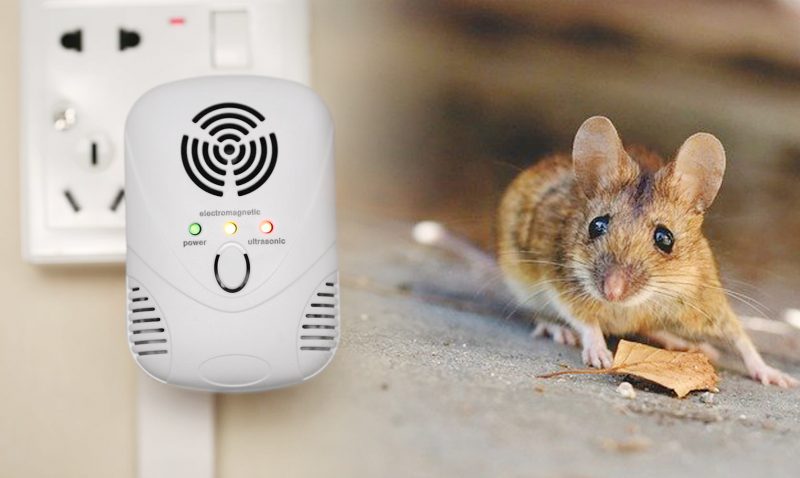
These gadgets produce sounds at frequencies that irritate mice. They are designed for indoor use and are safe to the environment and humans.
Steel Wool
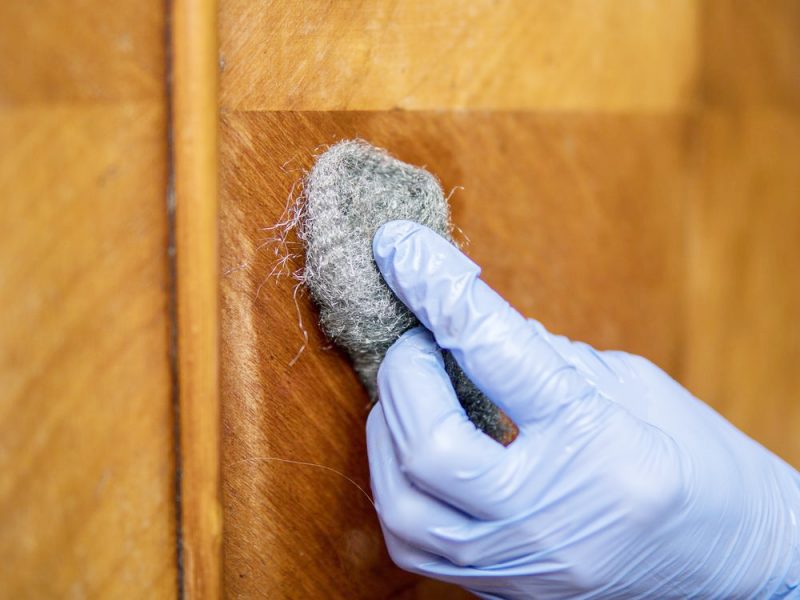
Rodents cannot gnaw or chew steel wool. It is therefore ideal for sealing rodent holes or crevices to keep them away from your home.
Kitty Litter
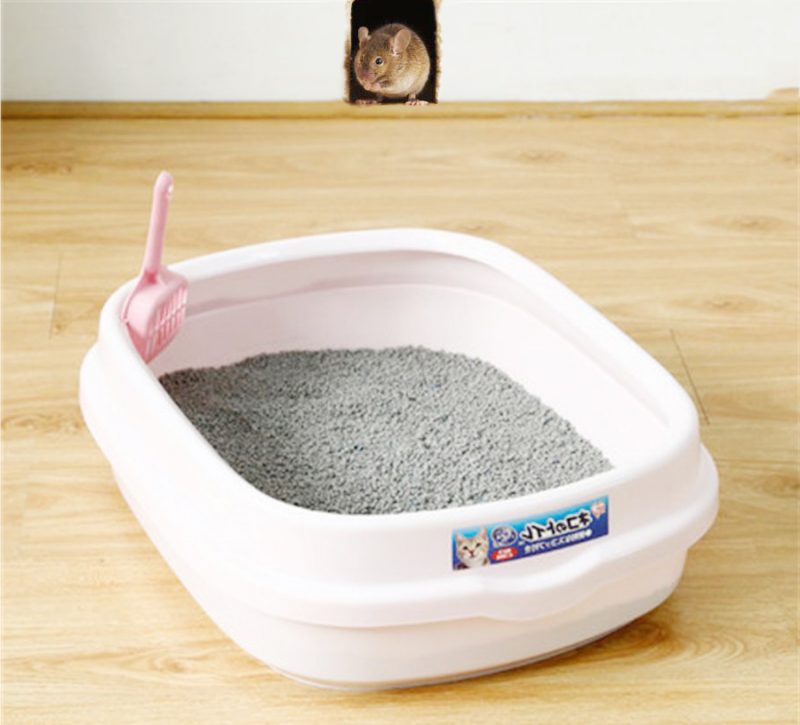
Making your home look unsafe for the rodents is a good way to get rid of them. You can achieve this by creating fear using dirty kitty litter that has absorbed cat odour.
Pros And Cons Of Using Scented Repellents To Get Rid Of Mice From Our Homes
Although many experts and home owners agree that essential oils and other scented repellents can be used to get rid of mice and rats some people still do not agree it is an effective method. Regardless, using essential oils and scented repellents has some advantages and disadvantages that you should know.
Advantages
- When used in the house to repel rodents, essential oils and other scented repellents also control other pests like aphids, bed bugs, ants, roaches, flies, fleas, spiders, stink bugs, wasps and even lice.
- They are safe for the environment and people
- It is very easy to use these products and they are also easy to find
Disadvantages
- They are costly than some alternative methods of mice control like traps
- These products have strong scents that may not be pleasant to you and your pets and can irritate the skin
- For these methods to be effective they need to be applied repeatedly
Best Preventative Measures That Will Keep Your Home Mouse-Free All Year Round
It is said that prevention is the best cure. Therefore, to keep rodents permanently away from your home, here are some of the best preventive measures you can implement:
- Deny rodents access to food and water sources. When your home does not provide food to rodents, they are unlikely to live there and will find somewhere else that has food resources for them.
- Your attention should not shift away from places like your roof and basement where rodents are likely to find safe for nesting. Carry out regular home inspection and maintenance. Repair damaged roofs, breaking mortar and seal cracks and crevices that can provide entry points for rodents into your home.
- Keep the lawn around your home short and tree branches trimmed. Long grass provides safe nesting grounds for rodents while hanging branches can be used to climb to the roof of your house.
- Hire professional pest control companies to pest-proof your house. These companies provide intelligent solutions that permanently deter rodents from infesting your home.
Professional Rodent Control Services In Adelaide
Eliminating rats and mice from your house may require you to consider asking for professional help. Pest Aid offers professional pest management and extermination of nuisance animals from your living space. It is a South Australian family owned and operated pest control company with many years of experience in inspection and treatment of the following pest infestations:
- Rodents
- Termites
- Possums
- Spiders
- Cockroaches
- Flies
- Mosquitoes
- Ants
- Wasps
- Bees
- Birds
-
How To Get Rid Of Huntsman Spiders
October 3, 2021
Experts in the field may assure you that huntsman spiders pose little danger to humans. However, they do not appear…
Table of Contents
Experts in the field may assure you that huntsman spiders pose little danger to humans. However, they do not appear endearing to quite a number of people. Indeed, you may not want them in your home, house, and car. Below are a few useful guidelines on how to get rid of huntsman spiders. But before that, the article describes the size, diet, eating habits, and why huntsman spiders get into your home.
Size And Locations Of Huntsman Spiders
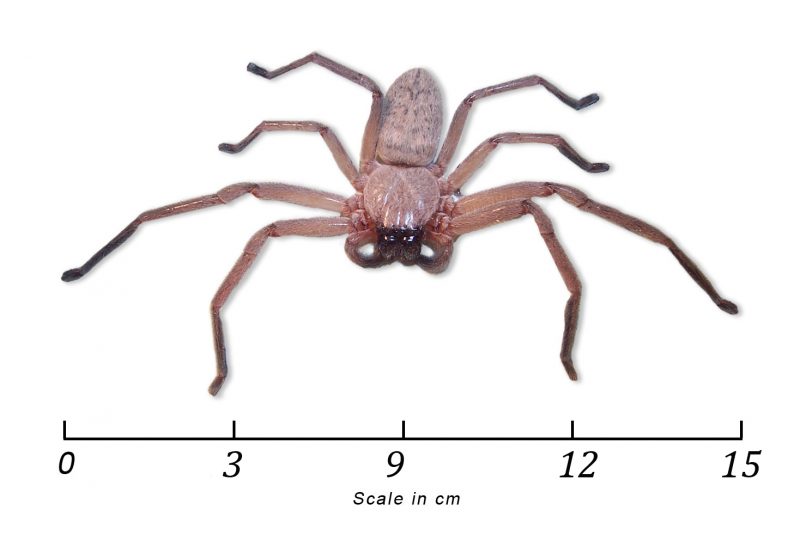
A giant huntsman spider can have a leg span measuring up to 15 centimetres. This is impressive, right? This makes it one of the most enormous spiders you can find in Western Australia. In addition, there are quite a number of species native to Asia, Africa, and South America.
The Diet Of Huntsman Spiders
Huntsman spiders prey on flying insects, crawling insects, and other invertebrates. This includes geckos and small lizards.
The Mating Habits Of Huntsman Spiders
Again, huntsman spiders differ from some other species in their mating habits. The males are usually not attacked by the females after mating. After impregnation, the female lays around 200 eggs in a silken sac it builds. You can find such sacs under rocks or barks of trees but beware; she usually stands guard for a few weeks.
Thereafter, when it is time, the female will open the egg sac. Thus, the little spiderlings are let out. Though they have a pale colour, they soon change to a distinct grey or brown colour in subsequent weeks.
Do Huntsman Spiders Build Nests?
Interestingly, you will not find huntsman spiders building webs or nests. Rather, it wanders about looking for food or mates. Not having a retreat base or a nest is one area where the huntsman spider differs from house spiders. Interestingly, these two other species of spiders, including the redback spider and the white-tailed spider, also display these traits.
Are Huntsman Spiders Harmful To Humans?
Your chances of being attacked by the huntsman are improbable. Though their bite may be painful, they are otherwise not harmful to humans. Another good thing is that they help remove other pests.
However, it is advisable to place them back outside. Huntsman spiders do attack when they are agitated. You may experience some swelling and need some medical aid. For example, their bite may cause vomiting, headaches, and heart palpitations.
More so, there are people who are afraid of spiders. Indeed, such people would prefer getting pest control to rid their homes or offices of huntsman spiders.
Why Do Huntsman Spiders Get Into Your Home?
Huntsman spiders may chase prey or mates through small openings inside your home, cars, or building. Their almond-like bodies allow them to squeeze around small spaces, and pantry moths buzzing around lights may attract them. Likewise, the warm summer months may make them want to avoid the summer heat.
How To Get Rid Of A Huntsman Spider

Have you tried using a broom on a spider? They are pretty fast, aren’t they? In fact, they may even climb right up the broom onto your arms. Indeed, some people would not want that. So, before you start thinking of inviting pest experts, how do you get rid of huntsman spiders?
Use a container and a piece of cardboard
One effective way is to make use of a container and a piece of cardboard. This is quite useful when the spider is on a flat surface such as a wall. Place the jar or container over the spider. Then, slip the piece of cardboard or paper between the container and the wall. Now, you can move outside, place the container down, and let the spider leave.
Use natural oils such as peppermint or citrus spray
Spiders dislike the scent of peppermint, eucalyptus oil, tea-tree, or citrus. Thus, regularly spraying them down likely entrances deters them from coming in. Simply fill a standard spray bottle with water. Then mix it with 15 to 20 drops of the essential oil. Finally, you can spray it down on cracks and corners.
Place nuts in corners
Moreover, go a step further and place a few nuts in selected corners of your home. This includes walnuts and chestnuts.
Clean up your home
Regular clean-up helps in getting rid of huntsman spiders. This includes cleaning and removing cobwebs from your closets, attic, garage, and dark spaces.
Avoid clutter
Clearly, the fewer hiding spots there are, the fewer spiders you will find. Clear out objects such as gloves, cardboard boxes, and general clutter. You may just be surprised to find clothes moths among old clothes. Surely, this can attract huntsman spiders.
Seal off cracks and openings
You can seal off entryways for huntsman spiders. For example, tiny crevices, vents, door and window openings, and loose screens need to be closed off. Sometimes, a foam sealant or caulk can come in useful here.
Reduce excessive moisture
Where there is excess moisture, insects become common. In turn, they attract spiders. Thus, you may add a dehumidifier in places like your basement.
Get rid of other insects
Indeed, spiders will be there when insects like ants, cockroaches, and ticks exist in the home.
Weed out your perimeter
You make it harder for spiders to make it to your home when you do not have vegetation around. This includes shrubs, woodpiles, composts, and even rocks. Furthermore, you may remove plants from the perimeter of your home.
Turn off outdoor lights
Remember that spiders are attracted to insects. In turn, insects are attracted to light. Therefore, you may avoid spiders by turning off bright outdoor lights.
Use a vacuum cleaner
Get those vacuum cleaners working around corners. A plus is you not only suck up the spiders, but you also remove their webs and egg sacs.
Set up a sticky trap
Go hunting with a sticky trap. This means that you set up a non-toxic trap. Usually, the glue traps the spider. Congratulations, you have caught a spider, though not in a web. Now, you can dispose of it. This is like a catch and release process.
Invite a pest inspection and control service
Another quick and effective solution is to invite a professional exterminator or a pest manager. They can advise you on preventive measures. Moreover, they are equipped with the knowledge and experience to handle a spider infestation. You can, therefore, look up to them for residential or commercial spider control.
-
Solutions For Rats In The Roof
October 3, 2021
Rats have been a problem since the start of civilization. They cause a lot of damage to property. They can…
Table of Contents
Rats have been a problem since the start of civilization. They cause a lot of damage to property. They can cause severe damage to your electrical wires, essential papers, furniture and food.
One of the most common complaints from home owners relates to rat infestations in the roof. They can cause devastating damage to people’s houses, offices and other properties. They even infest the roof of garages or sheds. Here’s what you need to know about methods of controlling rats in roof.
Importance Of Rat Control
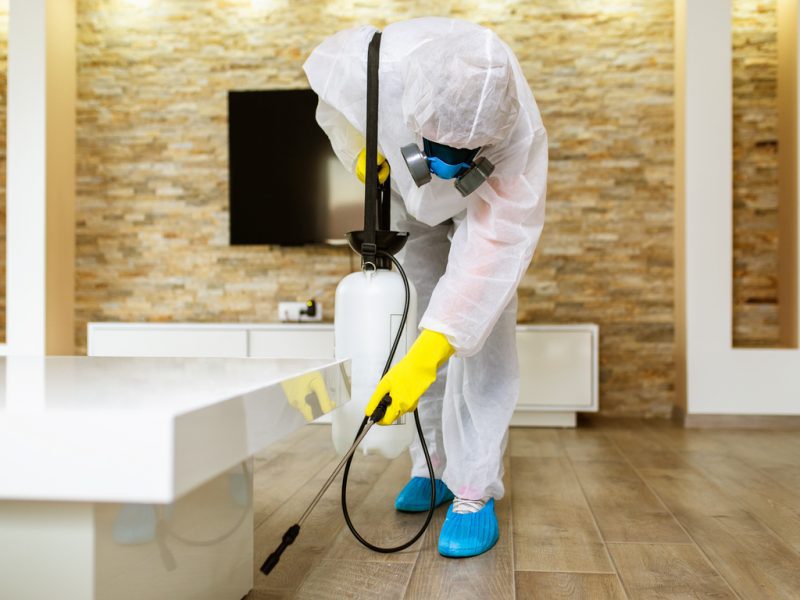
Pest control is essential because pests like rats are harmful to property and documents. They are equally dangerous to human health. Some of the roof rats leave their faeces in food. If a human being eats this contaminated food, they may get severe intestinal problems.
Rats travel a considerable distance, so they gather germs from different places. They are carriers of various viruses, including the Hantavirus and certain medically notorious bacteria like Salmonella. To protect yourself and your family from these pests, you should start rat control immediately.
Problems Due To Rats
Rats and mice can cause considerable damage to your building, food, clothing, wires, electrical gadgets and documents when they gnaw, urinate, defecate, and infest certain areas of the home. The gnawing can lead to problems like electrical breakdown or even fire.
Rats bite people, especially young children, causing diseases. Estimates show that they bite more than 4000 people a year. Sometimes their bite can be fatal. Their urine, droppings, saliva, and even dead skin cells are problematic for people with lung disease. The hair and dead skin cells of rats can trigger asthma attacks and worsen the situation. Therefore, it is essential to get rid of roof rats as soon as possible.
Roof Rats And Their Infestation
Roof rats are quite clever. They can easily climb up walls. Most prefer enclosed and elevated spaces in walls, false ceilings, and the attics. One thing most people don’t know is that rats are social animals. They live in packs, which means that if you see one of them on your roof or home, chances are there are many others. So, it is best to start preventive or control measures.
Rats reproduce quite fast. If you fail to find them in time, they can multiply, and rodent infestation will increase to an unimaginable size.
Rats and mice are more active at night. If you get to see one during the daytime, it means that you have some severe infestation in your house, and this is the surest sign of an infestation. Mice reproduce about 10 to 20 times faster than rats, particularly indoors.
Methods Of Controlling Rats
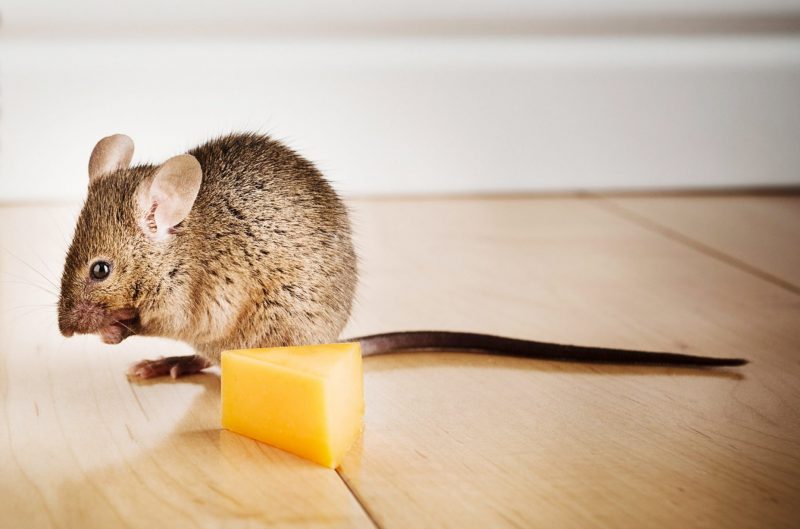
Ancient Methods of Rodent Control
Ancient Egyptians used pest-destroying animals to protect themselves from the ill effects of rats. Cats were used for this purpose. Cats can keep the rodents out a radius of 50 yards. Today, people still rely on cats to control mice and rats. It is an excellent alternative, much cheaper than most other rodent control methods. But this method might not work where you have severe rat infestation.
Modern Methods of Rodent Control
There are various modern methods you can use to keep rats and mice away from your home. They include biological, mechanical, physical, and IPM strategies. The most common rodent control method is poisoned bait.
Poisoned Bait
Exterminators introduce unique bait stations to get rid of insects and rodents, including roof rats and Norway rats. The bait stations use poisoned bait to kill and control the rat infestation. This method is very effective, but it has some dangerous side effects as well.
Exterminators kill the rats by giving them poisoned food. Poisoned meat is the most common item used. This method guarantees that you will get rid of the unwanted rats and mice. The problem with this method is that a larger animal, most likely your pet, might eat the poisoned meat, and die.
There are many examples of people who died by eating animals that previously had poisoned meat. Some of them were even killed by coming in contact with the poisoned meat. This is the main reason why pest managers mostly avoid this method despite its efficiency.
IPM Strategies
IPM stands for integrated pest management, and it involves use of information relating to the life cycle and spread of harmful pests. The IPM strategies are practical and environment friendly. It is almost impossible to get rid of rats without applying some IPM strategies.
Keeping Rats And Mice Out
The first step is to try your best to keep the rats and mice away from your house and roof. Rats and mice can enter the building through tiny holes in walls, cracks in pipes, sewer outlets and under the door.
You should use some blocking materials to keep them away from your home. Use metal flashing, copper, wool or clothe to block any holes or drains that can be an entry point for the rats. You can use door sweeps under the main doors. Make sure that there are no cracks and openings in your walls.
Manage your Garbage Properly
Garbage is the most favourite place for the rats to reside. Remove and discard any food waste in your house. Discard food items in tightly covered bags or cans. Find and remove all indoor garbage and clean your space properly. Outdoor garbage should also not be placed near your house. Place it on hard concrete surfaces that are far away from your property.
Monitor
Monitoring your home for signs of rodents is an essential step in rodent control. Ensure that you check for rodent droppings, burrows in the ground, nests around cluttered areas, and signs of gnawing on fruits, vegetables, or other food items. Ensure there is no rotten food in the pantry.
Identify the Type of Rat
There are different types of rats which are classified as pests. They include Norway rats that are best at burrowing, roof rats that are best at climbing up walls and false ceilings and lastly, house mice. You can differentiate them based on their footprints and physical appearance.
Use Different Traps
Once you are sure about the type of rats in your home, the next step is to use different traps to get rid of rats. You can use electrocution traps with bait stations. Make sure that you keep your children away from these traps and wear gloves while dealing with them.
Pest Control Professionals Can Help
If you are uncertain if there are still more rats and mice in your roof, you should call a professional pest control expert. This step will ensure that you never have to face rodent control problems ever again in your home.
-
Bull Ants Bites And How To Prevent Them
October 3, 2021
Ants are some of the most common insects you can find around. It is estimated that they can make up…
Table of Contents
Ants are some of the most common insects you can find around. It is estimated that they can make up about half of the insects’ population in a particular location. You will find ants at home, in your garden, yard, or even pool. Ants like living in warm areas, which is why you tend to find them at your house. Moreover, they infest homes looking for something to feed on.
Ants also live in structured nest communities that you can find in trees, in-ground level mounds, and underground. There are many species of ants around the world. One of the species is the bull ant. This article will delve into bull ant bites and stings, but before getting deep into that, let’s look at some critical aspects of this species.
How Can You Identify Bull Ants?
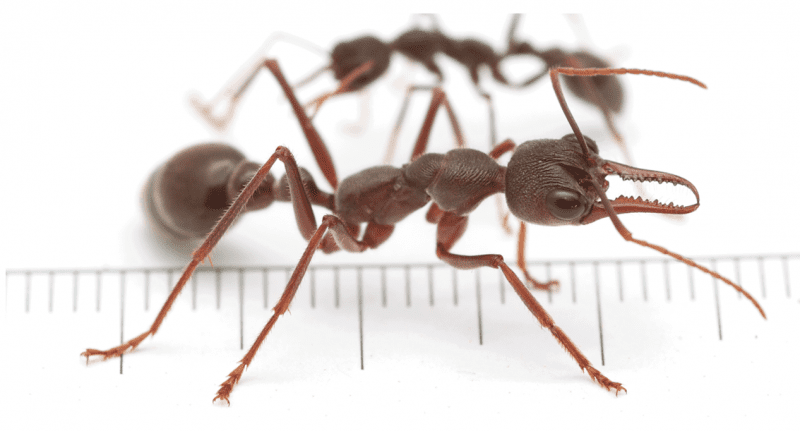
You can quickly identify bull ants by their large bodies. They are large and can grow to about 40 millimetres. They are characterised by big eyes, long slender mandibles, and venomous bites or stings. Unlike most other ant species, bull ants have superior vision and can track their enemies or even other intruders from a distance of at least one metre.
Most species of bull ants have orange or bright red colours on their abdomens and heads. They have different life cycles and behaviour. Some of the small species are referred to as jack jumper ants. Their name is based on their aggressive jumping behaviour towards intruders.
Where Can You Find Bull Ants?
Bull ants mainly inhabit woodlands, urban areas, and heathlands. They are the biggest ants in Australia, with only a few species that rival them in size in other parts of the globe. They have a fertile queen whose sole responsibility is to lay eggs. The infertile workers perform all the work needed to help keep the colony alive. Fertile bull ants usually have wings and get out of the nesting place to start new colonies.
Diet And Feeding
Bull ants usually collect nectar and other plant liquids as part of their diet. They also prey on other animals that they carry to their nesting places. They like eating protein-based foods that primarily include other insects. In addition, they like fruits and seeds.
Adaptation And Behaviour Of Bull Ants
Bull ants usually live underground and have small hidden entrances. Their nests extend a few metres underground. They usually attack all intruders regardless of their size because they do not like finding strangers near their nests. Their well-developed vision means they can follow strangers and even chase them several metres from their nesting place. In most cases, the sight of these giant aggressive ants coming out of the nest can cause a hasty retreat to any intruder.
Bull ants have painful bites. To sting, a bull ant grips its enemy with its strong mandibles, curls its abdomen to reveal its sting, and injects its venom. Their colonies tend to be small, but the queen usually invades other colonies, taking them captive and killing their queen.
Bull ants are active during the day and night. The workers usually forage for long distances alone instead of moving in trails, like other ants. They gather insects by overpowering and stinging them.
Danger Posed By Bull Ants Stings To People
Bull ants are aggressive and tend to give a painful bite. When bitten by a bull ant, you can apply an ice pack or any other approved spray to relieve the pain caused by the bite. In case you develop an allergic reaction from its bite, you should seek immediate medical attention.
The Developmental Stages Of Bull Ants
The queen of a particular bull ant colony starts to mate and digs a hole in the nesting place to lay eggs. The eggs go through the various phases from an egg to larvae, then pupae, and finally adult. From the egg to the adult stage, it usually takes three to four months. Bull ant babies are referred to as larvae. They are small white grubs that are hidden deep in the nest. They are cared for by the workers as they grow.
For food, paralysed and dead insects are brought to the larvae to eat until they grow up to the pupa stage. Bull ants usually pupate in a brown-like cocoon or case. When they emerge, they are fully grown but lighter in colour than the already mature bull ants.
Now that you know some of the essential facts about bull ants, it is time to focus on their bites and stings.
The Sting And Bite Of A Bull Ant
The queens and workers of a bull ant colony usually deliver painful bites. The pain can last for about five minutes. The bite from the ants is not like those of most other types of ants in terms of severity and venom delivered. Bull ants can bite you several times because, unlike bees, the sting is not left on your body. This also means that the ants do not injure themselves after they bite you.
The sting of a bull ant is usually located in its abdomen and is attached to one venom gland connected to the venom sac. The sac contains the venom delivered to its victims. Workers of larger species of bull ants have very potent and long stingers.
When Do Bull Ants Bite Or Sting?
Generally, bull ants tend to display highly defensive characters near their nesting places. However, they are also more timid while looking for food or feeding. They tend to be aggressive when intruders approach their nest. The workers usually go back to the nest instead of attacking the intruder. If the nest gets disturbed, an army of workers gets out of the nest to attack the intruder.
Jumper ants can jump many inches when they get agitated after their nest is disturbed. They usually propel their jumps by instant extension of their hind and middle legs.
How Does The Sting And Bite Of A Bull Ant Affect Humans And Pets?
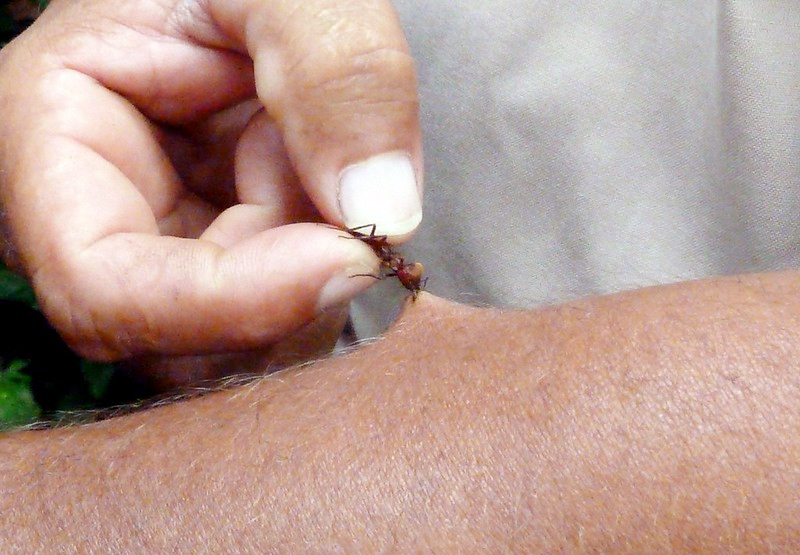
The sting of a bull ant can cause several health issues to you, including death due to the venom. The most common problem resulting from the ant sting and the bite is allergic reactions. The intensity or type of allergic reactions depends on your body’s sensitivity to the bull ant stings and bites.
Each species of bull ants has distinct venom components. You are advised to stay away from bull ants if you have an existing allergic condition to their sting. The toxicity of their venom has evolved due to intense predation by birds and animals during the day. It is not only humans who are affected by their bites and stings. Dogs and other pets also develop allergic reactions from these bites.
How To Prevent Stings From Bull Ants
It may be hard to avoid encountering bull ants, making it easy for you to get stung or bitten. A high risk of getting bitten is when you are gardening and you are unaware of the presence of bull ants in your garden. However, you can prevent their bites and stings by:
- Wearing protective clothing such as closed shoes or boots whenever you go to a place they frequent as they forage. You should note that bull ants can bite and sting through the fabric of your clothes. Therefore, remove any nests around your home or garden since bull ants bite when you get closer to their nesting place.
- Being vigilant on the ground. Moreover, avoid squatting, sitting down, or standing near their nests or places you are unsure if the bull ants may be present.
How To Identify The Bite Or Sting Of A Bull Ant
It is easy to recognise a bite or sting from bull ants. Unlike other ants, the bite is painful, which means that you can recognise it immediately. It is also worth noting that bull ants are large, so you can easily see them. A bite from a single ant can cause you immense pain. Bull ants also inflict several bites or stings without running away as they do this trying to defend their nests.
What To Do After A Bull Ant Bites You
The severity of a bull ant’s bite determines the action to take. If you experience severe allergic reactions, you should seek medical treatment immediately. Some of the signs you may experience that require immediate medical attention include:
- Increased heart rate
- Difficulty breathing
- Dizziness
- A sharp drop in blood pressure
If the effects are not severe, you can treat them using the following steps:
- Wash the affected part with water and soap.
- Apply something cold on the stung part and take an analgesic if needed to relieve swelling and pain.
- If you get severe or persistent itching and swelling, you can take an antihistamine for one to three days. Antihistamines are readily available in pharmacies without prescriptions. Your pharmacist can recommend the most suitable for you.
- If the bite fails to clear within three days or looks as if it is infected, you should seek medical attention. This is necessary because bull ants’ bites and stings are venomous and can lead to more complications.
How To Eliminate Bull Ants From Your Home
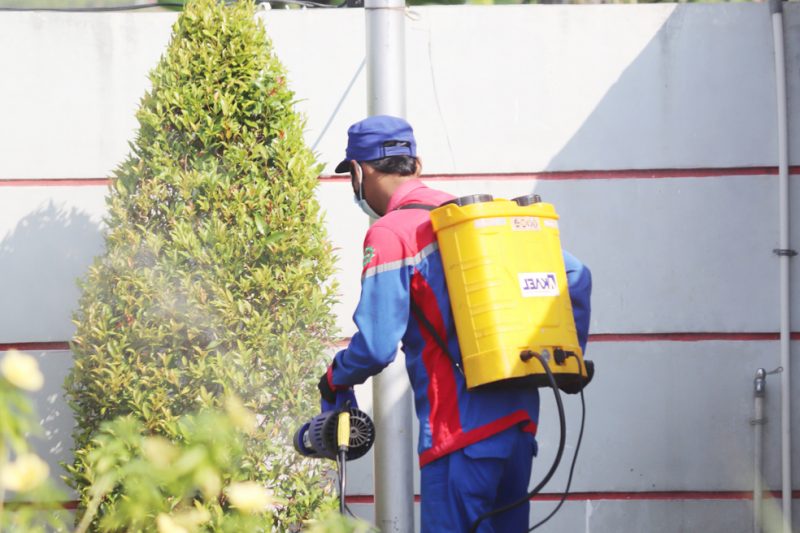
The best way to ensure that you do not get bitten or stung by a bull ant is to eliminate the insects from your home. Here are some of the steps to follow to get rid of the bull ants:
- Locate their Nest
Bull nests are located underground. However, you can also get them under rocks and rotten wood. Their nests are usually simple at first but become prominent as they increase in population. So, at first, it can be hard to notice them. However, you can quickly notice large mounds of dirt with a small opening on its top after the colony expands.
- Check For their Nests From a Distance
If bull ants feel threatened, they attack and bite or sting. To avoid being bitten or stung, it is always wise to check for their nests from a distance. Be sure to choose the best extermination method.
- Pick the Most Appropriate Bull Ant Elimination Method
You can use sprays and baits as a DIY control. This is an effective method because the ants eat the baits and take them to their queen. This method also ensures that you do not get too close to the bull nest, enabling you to avoid bites and stings.
Pest Control For Bull Ant Prevention
You should try as much as possible to avoid being stung or bitten by a bull ant. You do not want to go through pain or experience an allergic reaction after being bitten. Make sure your home or garden is free of these ants by ensuring that they do not build nests around your home. For long-term solutions to bull ants, hire a trustworthy ant control company to keep your home free of these insects.
-
The Danger Of Possum Poop
October 3, 2021
Possums are a group of 70 tree-dwelling marsupial species you can find in some countries. The average person can use the…
Table of Contents
Possums are a group of 70 tree-dwelling marsupial species you can find in some countries. The average person can use the terms “opossum” and “possum” interchangeably. The term “opossum” derives its name from its counterpart in the Powhatan language spoken by the Virginia Algonquian tribe. It means “beast” or “white dog” in Powhatan.
However, an opossum is a white, grey marsupial mainly found in North America. A possum is, by contrast, the name employed in describing the marsupial that appears similar to an opossum. For instance, one of these marsupials is the Brushtailed possum found in Australia, New Zealand, and Southeast Asia. Possums are commonly found in and around human settlements living among invasive pests.
It may not seem crucial to remove possums. This may be because they appear to be seemingly sweet and furry cat-like animals. However, it may become a problem as soon as they settle down in your attic or basement. These furry animals are known to excrete a great deal of waste. If left unattended, your doorstep or basement can be converted into the toilet in a matter of days.
To make things worse, their mouth stinks and can also contain many pathogens that can cause disease. Possums may enter your garden or house and leave their excrement – which is similar to that of cats or small dogs. Humans are at risk while cleaning possum poop; therefore, it is essential to segregate animal excrement. In no case should the opossum feces be touched. This is to prevent contact that may cause several infections once infected.
Where Do Possums Breed?

The possum doesn’t easily choose its nesting ground like other invasive pests. Possums prefer to nest and breed in attics because it’s the most secure place, and it is also dark. Before making it their nesting ground, they will become a familiar presence in your garden, backyard, shed, or basement. Their invasion usually begins at night, being nocturnal animals.
During the day, possums don’t come out, so you can’t be sure if they are in your home or not. However, to confirm if you have a possum invasion, you can rely on other clues. You can look, for example, for paw marks, sounds in your attic, and much more. However, the best way to identify them is by their poop. When it comes to possum invasions, they drop a lot of poop.
Possum Droppings
If you find possum droppings in your house instead of outside, then immediate action should be taken because possums have probably taken up residence in your home. When you have pets like a dog or a cat, or if you think that the droppings might come from a wild animal, take the time to make sure the droppings are cleaned up and out of reach.
If you know that possums are in your home, you should take precautionary measures, starting with removing the droppings. You should then take steps to avoid more possums and be sure to clean out any areas that the possums may have affected thoroughly. Aside from the possibility of carrying diseases, there is generally a rotten smell associated with their droppings.
Therefore, you will want to clean up the problem as fast as possible. When droppings are outside the house, try to find areas in the shed or the garage or beneath the house’s deck where the possums can nest. If a possum has settled in a town, it’s probably looking for a refuge. In this regard, it is best to look for places that protect them from the elements.
Identification Of Possum Droppings
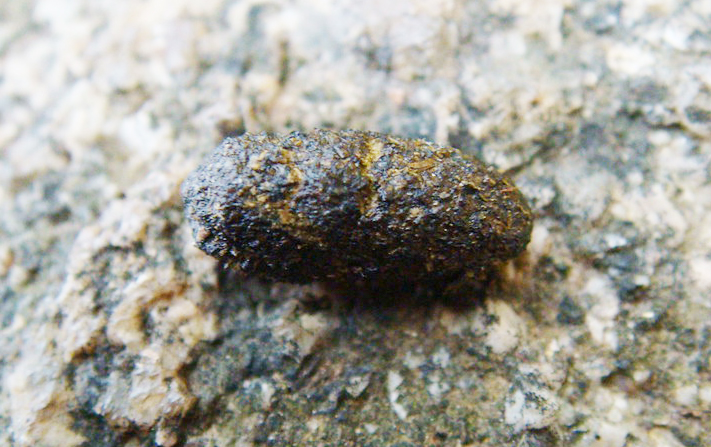
Possum poop looks extremely similar to dog poop and is almost the same. Because of these factors, detecting possum feces is a difficult job, particularly if you have pet dogs in your home. Possums are also opportunistic hunters or scavengers. They consume almost everything they can get their hands on since they are omnivorous creatures.
This implies that, unlike raccoons, we cannot use a stick to examine feces to identify the species based on what they have eaten. The first indication of possum feces would be an awful rotting odour. Possums usually defecate and urinate at the same time. The ammonia in the pee would make the feces moist and emit an unpleasant smell.
Secondly, possum droppings are often big and cylindrical, with smooth sides and a brown or blackish hue. Possum droppings are often seen in heaps, with droppings piled on one another and combined with urine. If you look closely at possum feces, you will see that it is not continuous but is broken in the centre.
Health Risks Associated With Possum Poop Exposure
Possums may transmit illnesses to people. Most of these illnesses, if not treated promptly, may become life-threatening. It is crucial to remember that people only acquire these illnesses from possums via direct contact or through possum feces. Possums are docile creatures; thus, the likelihood of them attacking people is low.
This means that the only method to encounter possum infections directly is contacting, eating or drinking anything contaminated by possum feces. Leptospirosis is a bacterial infection in humans caused by the Leptospira bacterium. Possum feces and urine have a high concentration of these bacteria. Leptospirosis is a zoonotic illness that infects people when they come into contact with possum excrement or urine via a cut or open wound.
Leptospirosis is an uncommon illness that may cause kidney damage, meningitis, liver failure, and respiratory problems if left untreated. The Buruli ulcer is another significant illness caused mainly by bacteria in possum feces. The bacteria Mycobacterium ulcerans, which is abundant in possum feces, causes the Buruli ulcer. The Buruli ulcer, like Leptospirosis, is acquired via direct contact with possum feces.
Mycobacterium ulcerans is a skin-eating bacterium that causes painless lumps on the arms and legs in the initial stages. These lumps will eventually become big sores. The Buruli ulcer, if not discovered and treated early enough, may result in lifelong deformity. Many of these illnesses are linked to possum feces. Animals, like people, are susceptible to these illnesses. If you have pets at home, you must exercise caution while letting them out, especially if you live in possum-infested regions.
How Do You Get Possum Poop Out Of Your Yard Or Attic?

There are many possible health risks connected to exposure to droppings. As such, you want to dispose of your waste as soon as possible. If you see possum feces or the poop of any other invasive pet, it is best to remove it as fast as possible, especially if you’ve got children or other pets.
Now that you know how dangerous possum poop can be, let’s look at safely removing it from your yard or attic. The method of cleaning is determined by where the droppings are located and the quantity of droppings present. Let us first look at how to remove droppings from their nesting places in your attic, cellar, or any other location where there is a mound of droppings.
Steps:
- Put on disposable gloves, rubber boots covered in a disposable cover, and a surgical mask to avoid inhaling the suspended particles from the dried-up feces. Take into account that you may require a protective suit for your entire body.
- If the poop pile has dried up, spray it with water to keep the dried-up particles from flying off or remaining suspended in the air.
- Using a shovel, transfer the feces into a pail in a safe manner. Next, collect and remove droppings in plastic bags. It is not recommended to dig a hole and dispose of feces in it. The safest method is to light the feces on fire with gasoline. Setting it ablaze guarantees that no soil or water sources are polluted.
- Using boiling water and a disinfectant solution, clean and disinfect the area exposed to a possible droppings site and strongly disinfect it once the droppings have been removed. You may have to replace it entirely if you have carpet, insulation, furniture, or anything else that cannot be adequately cleaned.
- As an additional measure, use a fogger in the area in question, as it is possible to achieve and disinfect any corner and hidden space surface, even if it is not feasible for you to achieve it yourself.
- Properly clean the shovel and rubber boots, as well as dispose of the gloves. If you come across possum excrement in your garden or backyard, put on gloves, a mask, and light it on fire with gasoline. After extinguishing the fire, spray some disinfectant in the affected area. Similarly, if there is poop in your swimming pool, drain the water entirely and disinfect the pool.
Hazardous pathogens like Leptospirosis or Salmonella may also be present in possum droppings. Explicitly speaking, they usually have a very contagious illness called EPM (Equine Protozoal Myeloencephalitis), which may rapidly kill horses by assaulting their nervous systems.
Effective Pest Control For Your Garden
Opossums are a common garden pest, particularly when they munch on or trample plants. And they may steal pet food or dig through the trash. Opossum removal is difficult, but with persistence, the backyard possum may be persuaded to relocate. The most straightforward approach to deal with opossums is to learn their routines.
Most often seen in forested regions or open fields near streams, they can live in abandoned burrows, tree crevices, brush piles, and places under stairs or decks. These animals are nocturnal, meaning that they are active at night and sleep during the day. These intruders assaulting your yard may be tough to “see.” They typically leave droppings, trails, upturned pet food bowls or trash cans, and plant damage as evidence of their presence.
Fruits, nuts, insects, eggs, and tiny animals like frogs and mice are all eaten by backyard possums. Possum control involves using repellents and traps. Another is fencing to obscure entry into your property. There are several products present on the market to deter wild animals. These, however, provide little alleviation.
Other possum management techniques include using motion-activated sprinkler systems to scare them away. Possum control often involves trapping opossums.
Catching Possums Through Traps In Your Garden
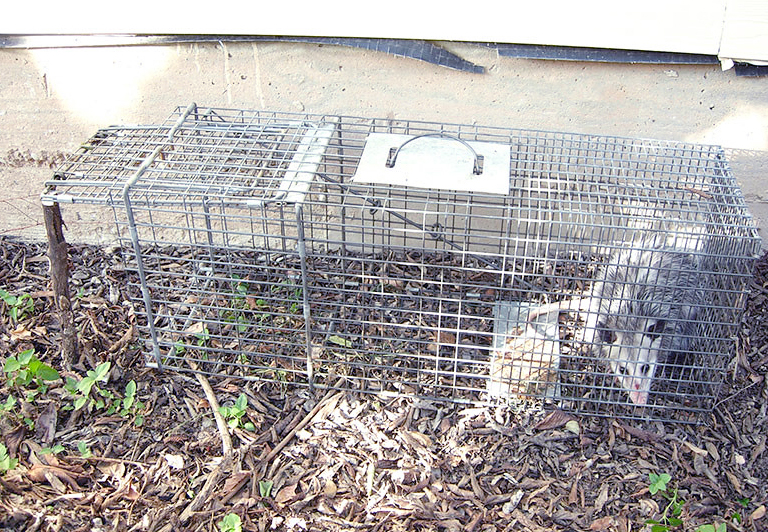
How to catch an opossum isn’t as challenging as what to do with it. In most cases, a certified wildlife specialist must relocate the animal. Killing these creatures should be the last option, and most states prohibit it. Nonetheless, catching them in a box or cage is simple.
Traps should be 10x12x32 inches (25x31x81 cm). Arrange the fruit traps along paths and established travel routes. Possums may be controlled by using woven wire or an electric fence.
Garden Fencing As Effective Border Measures For Possums
Garden fencing should be at least 4 feet (1 m) high, with the top foot (31 cm) pointing away from the garden to deter climbers. Adding 3-4 inches (8-10 cm) of electric fence on top may also assist.
The most effective defence is to make the place unattractive to possums. You can do this by simply:
- Pruning overgrown trees and bushes
- Removing brush heaps and related debris
- Cleaning up any fallen tree fruit
- No pet food left out overnight
- Tight-fitting garbage can lids
- Close or block any openings beneath or near the house, such as porches, decks, and sheds
-
What Do Rats Look Like?
October 3, 2021
Norway Rats And Their Appearance The common rat, also known as the brown rat, sewer rat, Hanover rat, Swarf rat,…
Table of Contents
Norway Rats And Their Appearance
The common rat, also known as the brown rat, sewer rat, Hanover rat, Swarf rat, Norwegian rat, or Norway rat, is a widespread species. It is one of the largest muroids and weighs between 140 grams and 500 grams. However, enormous brown rats can weigh between 900 grams to 1000 grams. Mostly these kinds are domestic specimens.
Norway rats have brown fur with black hairs scattered all over their coat. Underneath these hairs are lighter colours, with some rats having grey or white colours and others featuring even a yellow tone. They are very long, about 7 to 9.5 inches, and heavy-bodied with a blunt muzzle.
However, their tails are shorter than the total length of their heads, plus their body. Norway rats have small eyes and ears. When bred selectively, the brown rat has produced both fancy and laboratory domesticated rats.
Where Do Norway Rats Stay?

Norway rats prefer living in the company of humans. They thrive and multiply in big cities, burrow beneath constructions and buildings, hide in piles of wood, basements, attics, or sewers.
Signs Of Norway Rats Infestation
Norway rats are generally nocturnal, and you could barely see them during the day. The following could indicate signs of infestation:
- Burrows around your building.
- Grease stains and dark rub marks are probably from contact with grease or oils in pathways, buildings, or garages.
- Dug holes in areas like lawns.
- Droppings with blunt ends are usually capsule-shaped along their paths.
- Gnaws on furniture, wood, or chewed wires.
Damage By Norway Rats
Norway rats could cause great havoc in your homestead. Some of their effects, apart from causing diseases include:
- Gnawing through your furniture all over the house.
- Damaging your clothes.
- Not forgetting the unpleasant smell from their droppings.
Their droppings could also cause a lot of dirt besides being harmful to your health. Similarly, Norway rats reproduce so fast and could quickly increase their population under favourable conditions. This poses threats of infestation, and rat control should always be your concern.
How To Prevent Norway Rats

- Norway rats like hiding in piles of woods or piles of debris during the day. You should therefore keep these away from your house as far as possible.
- Properly seal any containers with food products.
- Seal or block any holes or burrows around your house. Their new spots are usually rough, while old ones become smoother due to frequent contact.
- Ensure proper containment of garbage and litter; always keep them in closed containers or far away from your house.
- Fix any leaks in your house and keep moisturised places such as pipes away.
What Do Roof Rats Look Like?
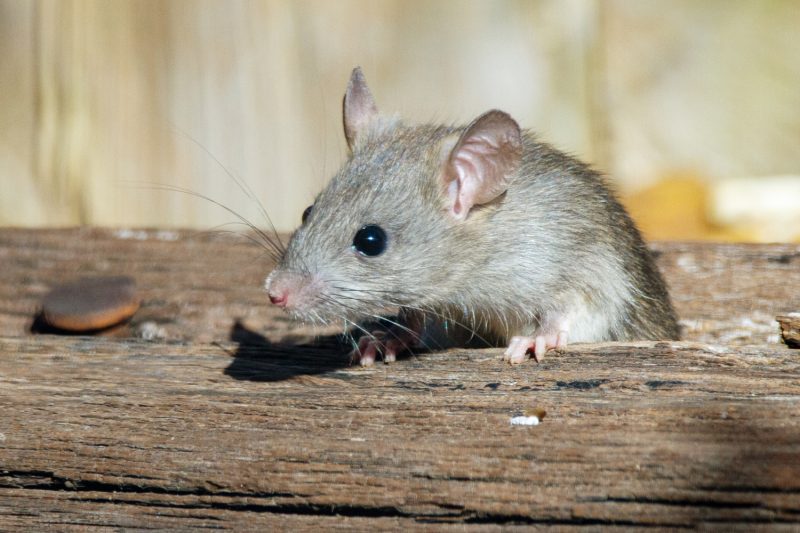
Roof rats are primarily known as fruit rats or house rats. Generally, these rats are usually light brown mixed with black. They have lighter colours, typically grey or black, underneath their coats. Black rats have smooth fur and a pointed muzzle. Their eyes are enormous, and they have large ears that cover over the eyes when pulled.
Their heads plus body could total up to 6 to 8 inches long while their tails are scaly and could be 7 to 10 inches long. Black rats are theoretically dangerous. Most of them weigh between 150 grams to 250 grams but could grow to 340 grams. Roof rats are slightly smaller than Norway rats.
Where Do Roof Rats Stay?
They mostly prefer living in bushes, trees, or areas with massive vegetation while outside. If they invade your house, you could find them on top of cupboards or cabinets, on the ceiling, in attics, and any high place.
Signs Of Roof Rats Infestation
- Destroyed coverings on electrical equipment and or plastics.
- Gnaw marks on household items, wood materials like furniture, and around the eaves of the roof.
- Damaged fruits.
- Unpleasant rat noises from the ceiling and or attic, mainly during the night.
- Their droppings (usually with pointed ends) along the baseboards.
- The remains of their nests in cabinets, ceiling, attics, etc.
Prevention Of Roof Rats
- Seal all holes and vents around your house with diamond mesh.
- Trim any branches of trees that hang over your home.
- Ensure that any access points on the roofs or roof lines are tightly closed.
- Caulk all the cracks and crevices on your walls.
- Store all the food products, including pet foods, in sealed containers.
- Ensure proper handling of leftovers and kitchen refuse.
- Keep the garbage in closed containers and exercise good sanitation.
- Clean your compound and dispose of fallen fruits or unused fruits.
Differences Between Norway Rats And Roof Rats
- Whereas Norway rats are heavily built, roof rats are thinner.
- Norway rats have round noses, while roof rats have pointed noses.
- The roof rat has a longer tail than their body, while a Norway rat has a shorter tail than their body.
- The roof rat has darker fur than the Norway rat, which is generally brown.
- Roof rats mostly live four feet above the ground and other higher levels, whereas Norway rats are not good at climbing and primarily reside in basements and low-level regions.
- Whereas roof rats prefer warm areas with more humidity, Norway rats prefer the exact opposite conditions.
Call A Rat Control Specialist
The chances of experiencing a rat problem could be high for anyone. Rats only look for favourable conditions such as shelter, food, and water. They have high rates of reproduction; thus, a large infestation could be a significant challenge. Rats cause a lot of mess in houses. They will gnaw through your walls, furniture, pipes, electrical wires, and so on. They will destroy your fruits, your food and even contaminate them.
Similarly, rats could cause diseases through their droppings and urine, posing a great danger to you, your family, and pets. You could always control and get rid of rat infestations by yourself, especially if it is small. However, if the infestation is a large one, it might be beyond you, and as such, you are better off if you seek professional help.
Always be on the lookout!
-
How To Get Rid Of Bed Bugs
October 3, 2021
What Are Bed Bugs? Have you heard of bed bugs? What are they? What do they look like? Bed bugs are…
Table of Contents
What Are Bed Bugs?
Have you heard of bed bugs? What are they? What do they look like? Bed bugs are small insects that depend on both humans and animals for blood. They are oval and primarily brownish. Adult bed bugs may seem to have flat bodies, but after feeding, their bodies swell and become red in colour due to the blood.
These pests do not have wings. However, their movements are very fast, making it a great challenge to deal with them. Similarly, the female bed bugs lay many eggs under favourable conditions, producing almost three generations annually. This faster rate of multiplication may encourage bed bug control.
Where Do They Stay?
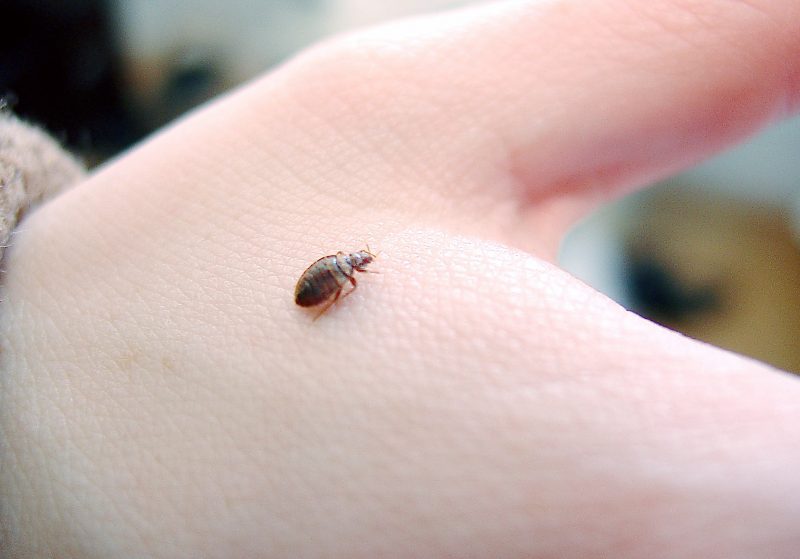
These insects may easily enter your home or house without your knowledge. Since their bodies are flat, they are capable of getting through the tiniest of spaces into your house. They most likely occupy mattresses, cushions, couches, bed frames, clothes, box springs, and cupboards.
Explicitly speaking, bed bugs will inhabit anywhere that would give them easy access to you or your family members at night. Yes, at night! They are rarely seen during the day. Remember, they quickly multiply, and with time, they may be everywhere, in your ceiling, on the walls, on the floors, in your kitchen, and even in neighbouring houses.
Are they harmful? Yes. These insects bite humans since they solely feed on blood. They have elongated beaks, which enable them to suck your blood. Research shows they feed 3-7 days a week and for approximately ten to fifteen minutes before hiding again. Bed bug bites may seem painless initially; however, they become very painful and itchy with time.
Features Of A Bed Bug Bite

Their bites are curved and about 2 to 4 millimeters. These bites have tiny blisters on top of them and are often found on open skin.
Bed Bug Bite Treatment
Bed bug bites can appear as mosquito or flea bites, but they are treatable. You should always consult with your physician if you are unsure whether it is a bed bug bite. The major remedies are oral antihistamine or topical steroids. You could get other treatments from your physician.
Signs Of Bed Bugs
The primary sign of a bed bug’s bite, which shows their presence, is the itchiness of the skin. Therefore, if you wake up in the morning with itchy open skin, it could probably be a bed bug bite. Other signs of bed bug infestation include:
- Spots of bed bug excretion on your clothes, on the walls, or your bed.
- Stains of blood on clothes or bedsheets and bed covers.
- Their eggshells are in their hiding spots.
- An unpleasant smell from their glands.
Getting Rid Of Bed Bugs
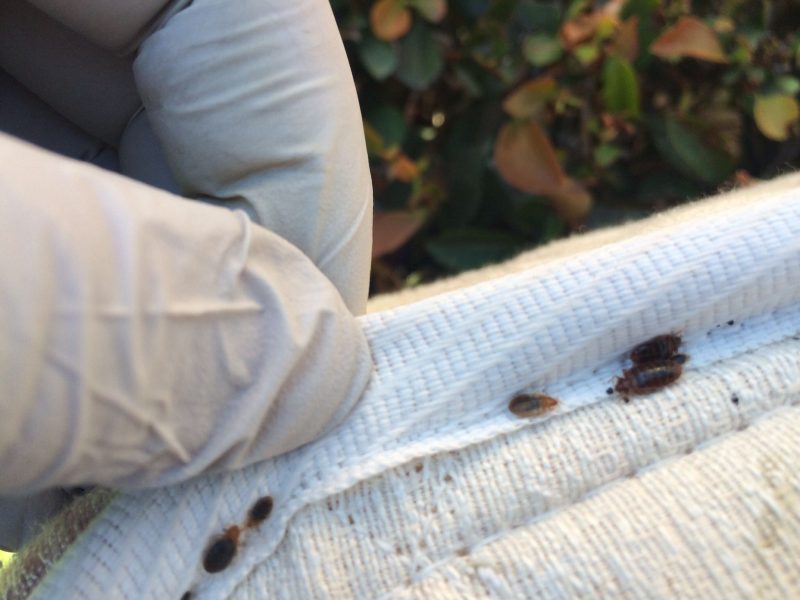
Yes, it is possible to get rid of bed bugs. Is it easy to get rid of bed bugs? No, it is not very easy to get rid of these insects. Even with professional help, eliminating all bed bugs may not be possible in one visit or treatment. So what makes it so challenging to get rid of bed bugs?
- High Rates of Multiplication
Female bed bugs lay hundreds of eggs, and almost all of them hatch. This makes it possible for them to birth nearly three generations yearly. Similarly, the nymphs take a short period to mature. They shed their skins five times before developing into adult bed bugs. After maturity, they are ripe for reproduction.
A high population is a significant challenge in pest control, and bed bugs are no exception. Once they find a good place to hide in your house, with favourable conditions and blood availability, they will multiply so fast, almost doubling their population in a fortnight, making it very difficult to kill them, primarily if you rely on “Do It Yourself” means.
- Secretive Lifestyle
Their behaviour is another factor that deters the ability to get rid of them. These insects hide in small groups in cracks or dark places during the day and attack severely at night. They do not have a constant area of hiding like most insects such as ants or termites. On the other hand, bed bugs like moving from place to place while keeping close to their hosts for easy accessibility.
Similarly, they have flat bodies that enable them to enter tiny places like crevices and cracks. It is not very easy to notice them from such places. This kind of lifestyle makes it challenging to get rid of bed bugs.
- Resistance to Most Pesticides
Most pesticides used in pest control are harmless to humans and other animals. However, these pesticides act so fast and can eradicate most insects by using small quantities. However, entomologists have revealed that most bed bugs have developed resistant features that make them immune to most pesticides. Such resistance to pyrethroid makes it very difficult to get rid of bed bugs altogether.
Bed bugs can cause a lot of havoc in your home, especially at night. They can also embarrass you with your visitors when they find good hiding places in your coaches. While it is possible to get rid of them, it requires a lot of patience. Similarly, you may find it necessary to combine various methods and approaches to eradicate these insects.
Identifying the Areas of Infestation
Initially, the first step in getting rid of bed bugs is to identify all the infested areas in your home. It would be best to find the bed bugs before they multiply into a large population. However, it may not be easy to identify even the smallest bed bug population. Therefore, whether you decide to do it yourself or hire a professional, much work needs to be done to detect these small insects.
Remember, they have flat bodies that enable them to squeeze into cracks and crevices or other smaller spaces. Therefore, it would be best if you begin by inspecting such places. Further, you need to check for any signs of infestation mentioned above, including clothes, bed frames, cushions, box springs, etc. You could use a flashlight to find them in their dark hiding places.
Containing the Infestation
You need to first trap the bed bugs before containing them for extermination. You could use a vacuum or a net to trap them. However, the fastest and easiest way to trap bed bugs is by using a vacuum. You will have to position your vacuum over all the possible hiding places of bed bugs.
When satisfied that you have gone through all the possible hideouts and trapped the present bed bugs, you need to contain your items properly. You could pack your items in plastic bags and put them together with other items in areas with higher temperatures. Bed bugs cannot survive under high temperatures. Therefore, if there is any bed bug you did not manage to trap, the high temperatures would probably kill them.
Preparing for Extermination
Once you have contained the trapped bed bugs, you need to prepare your house for treatment. Therefore, you might consider cleaning all your items and the hiding places for bed bugs. If possible, remove all the other items such as old books, extra clothes, carpets, etc., out of the house.
However, you should avoid moving your items from infested areas into non-infested areas at all costs. Remember, even a single pregnant bed bug could be disastrous. Additionally, it would be best to close any open areas, move your furniture a few inches from the wall, sweep the walls and the ceiling and seal any open electrical equipment.
Extermination of the Bed Bugs
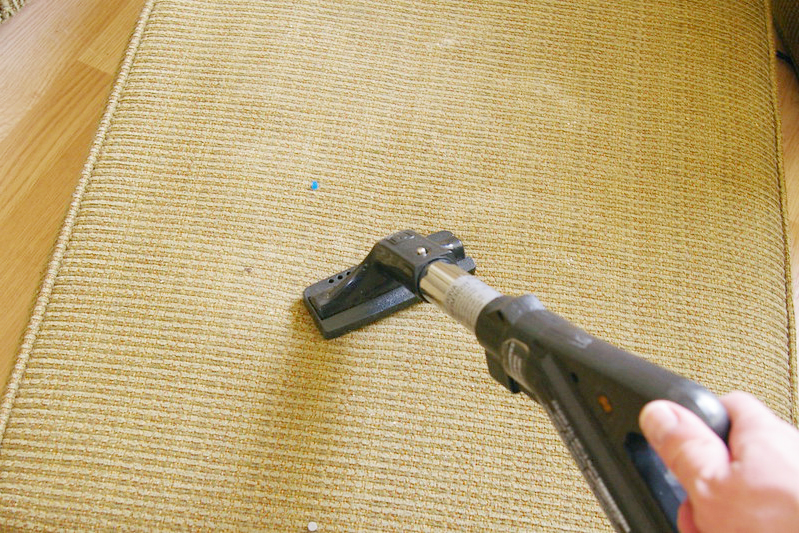
Here’s how to kill bed bugs dead:
Do It Yourself Method
Other people prefer getting rid of the bed bugs by themselves. Well, it is possible to exterminate them by yourself. You could use high temperatures above the room temperature, for instance, 50 degrees Celsius, or extremely low temperatures, like zero degrees Celsius, to kill bed bugs. Similarly, you could use a vacuum after scrubbing all their hideouts and dislodging bed bug eggs.
However, make sure you clean the vacuum outside the house after vacuuming all the possible hiding places. The easiest way to kill bed bugs by yourself is by using a powerful heat steamer. By passing your heat steamer over their hiding places, you could manage to kill most of them. However, always keep the heat steamer away from the wall outlets.
Heat Treatment
This treatment has proven to be the quickest and most effective way of killing bed bugs. Most professional bed bugs exterminators prefer this to other methods. The process involves subjecting the room to temperatures between 57.2 degrees Celsius to 62.7 degrees Celsius.
At slightly above 50 degrees Celsius, all the bed bugs would have died. The high temperatures attract the bed bugs from their hiding places. Professionals exercise great caution, ensuring that the temperatures are high enough to kill the bed bugs but not damage any of your items.
The process takes six or more hours of careful inspection, guidance, and cooperation from the homeowner. However, heat treatment does not have any residual effect. Therefore, it would be best to apply a residual pesticide alongside heat treatment to prevent further infestation should any bed bug survive the treatment.
Non-Chemical and Chemical Treatment
Even though it is a traditional method of killing bed bugs, chemical treatment may still be effective. Besides, it is more budget-effective than heat treatment. This method kills bed bugs quickly, especially those that come into direct contact with the insecticides. Similarly, those that get into contact indirectly with the insecticides will die as well.
Consequently, some insecticides do not kill all the bed bugs. Some bed bugs develop resistant features making them immune to these insecticides. Therefore, you should consider a pesticide application after insecticide treatment to exterminate the nymphs before they mature into adult bed bugs.
Here are some examples of possible insecticides to use:
- Pyrroles – Disrupt the cells of the bed bugs, thus killing them.
- Pyrethroids – The primary insecticide used in terminating bed bugs. However, most bed bugs have shown signs of resistance to it.
- Neonicotinoids – The perfect insecticide for bed bugs that are resistant to other pesticides. They destroy the nervous system of the bed bugs, thus killing them.
- Desiccants – These solutions destroy the outer coating of the bed bugs exposing them to heat. They thus dry up and die. Even though the effect of desiccants is gradual, the bed bugs cannot become resistant to them.
- Diatomaceous Earth – This is dust that sticks to the bed bugs and dries them up from the inside, hence killing them. However, it would be best to be more cautious when using this since some types of DE are toxic to humans and pets. One effective type for killing bed bugs is an animal food additive.
What about alcohol rubbing? This method is inefficient in killing bed bugs and could also be harmful to you or your family.
An Expert In Bed Bug Control Could Be The Answer
In conclusion, the presence of bed bugs in your house does not mean that you are dirty. It simply means that bed bugs are hitchhikers and can get into contact with you from anywhere. However, they are not very pleasant, and the sooner you get rid of them, the better. You could always kill them by yourself. However, if you do it improperly, you will cause more problems and suffer more expenses. Why not hire a pro to help you once and for all?
-
Solutions For Scratching Noises Coming From Your Walls In Australia
October 3, 2021
You are dead asleep at 3:00 AM, and some scratching noise wakes you up. What could it be? A bird?…
Table of Contents
You are dead asleep at 3:00 AM, and some scratching noise wakes you up. What could it be? A bird? A rodent? Apart from it being not very pleasant, it can be very nerve-wracking. It would help if you were comforted that this scratching noise is experienced by people worldwide. The most common areas where such noises come from in Australia are the wall and roof during the night.
Why Are The Noises Heard At Night And Not During The Day?
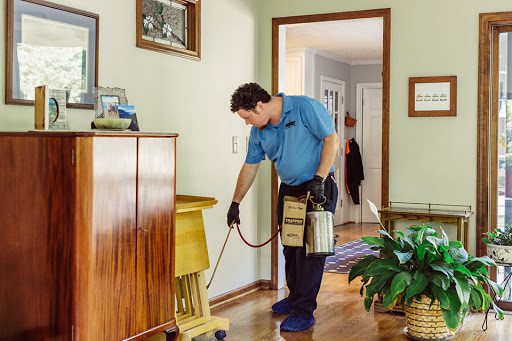
During the day, you are probably moving up and down and cleaning and moving furniture around. Or probably in the kitchen banging pots and pans, and you might not hear noises reasonably quickly. The second reason might be that these crooks operate at night or have courage when everything is dusky and silent.
Nonetheless, these weird sounds coming from the roof spaces or walls should not make you get scared. However, you should not disregard it either. Remember that pests not only transmit diseases but also bite your electrical wires and lagging, and they are not a pretty sight!
The Difference Between Animal Noises And Household Noises
Not all scratching noises heard are from animals. Some noises come from the house: a loose pipe, a displaced ceiling panel, or something connected to the property. Or it could simply be a piece of electrical machinery that is faulty. The first step is to identify what is causing the noise before solving the issue.
The most significant clue if you want to tell if the noise is household-related or not is listening to consistency. Animals move around, and so the noise they make will be random and irregular. On the other hand, household noise will be consistent. Go and examine the place and see if anything is out of place causing the noise, like wind blowing a loose pipe.
It is essential to make a visual confirmation before jumping to conclusions. If the noise is coming from the inner part of the property, try operating different valves in your house. If it is a plumbing problem, you will tell and pinpoint precisely where the problem is.
Check if it is one of the primary household appliances, such as the air conditioner or the furnace. Try switching them on and off so that you can conclude if it is a mechanical problem. Once you have established if the noise you hear is mechanical or wildlife-related, you can take appropriate measures to sort out the problem.
What Is Behind The Scratching Noises In The Roof And Walls?

There could be some bugs or possums that are behind the scratching noise in your walls. Other insects, such as carpenter ants, are not noisy, so you might not notice they are there unless you do inspections. So if you hear noises inside the roof, you might have a mice problem or wild animals such as racoons. Below are some of the culprits that could be causing the irritating noise:
Beavers
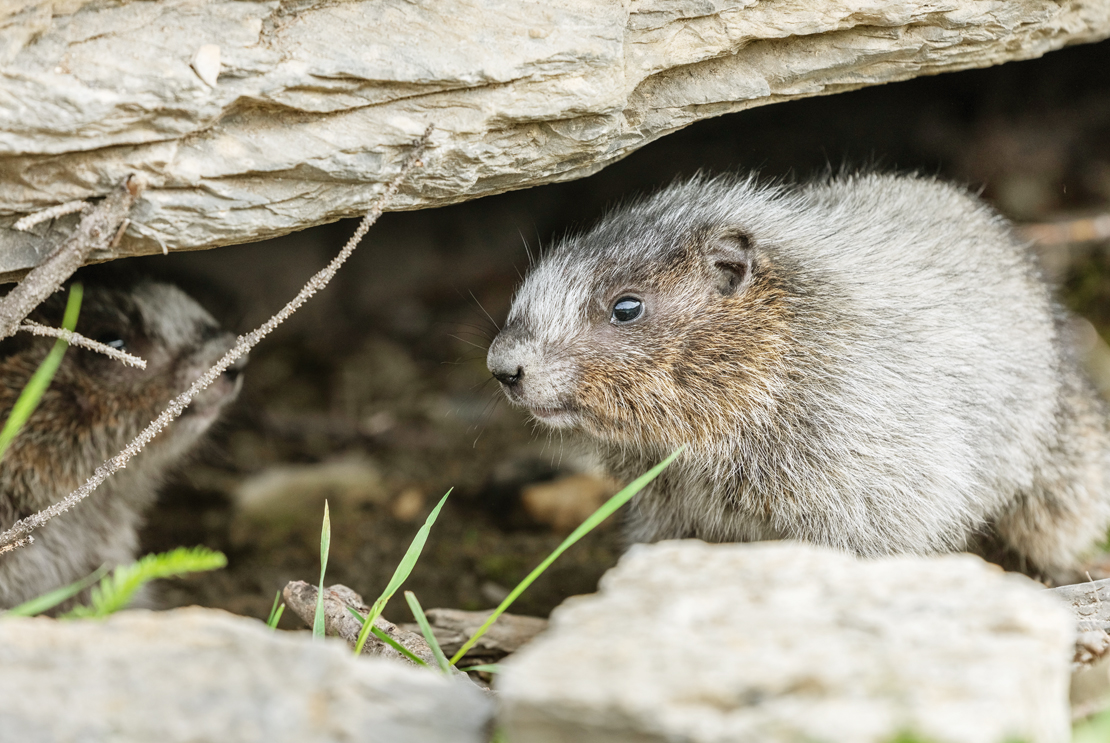
One of the things that could be causing noise in your roof is a beaver. Beavers move around during the daylight, and you might not hear them as the household is a hive of activities during the day. The noise might not be constant because beavers move erratically once they are trapped in your house. One thing that will tell you if you have a beaver in your home is faeces. If you look closely at the faeces, you will notice that they are lighter than rats’.
Rats
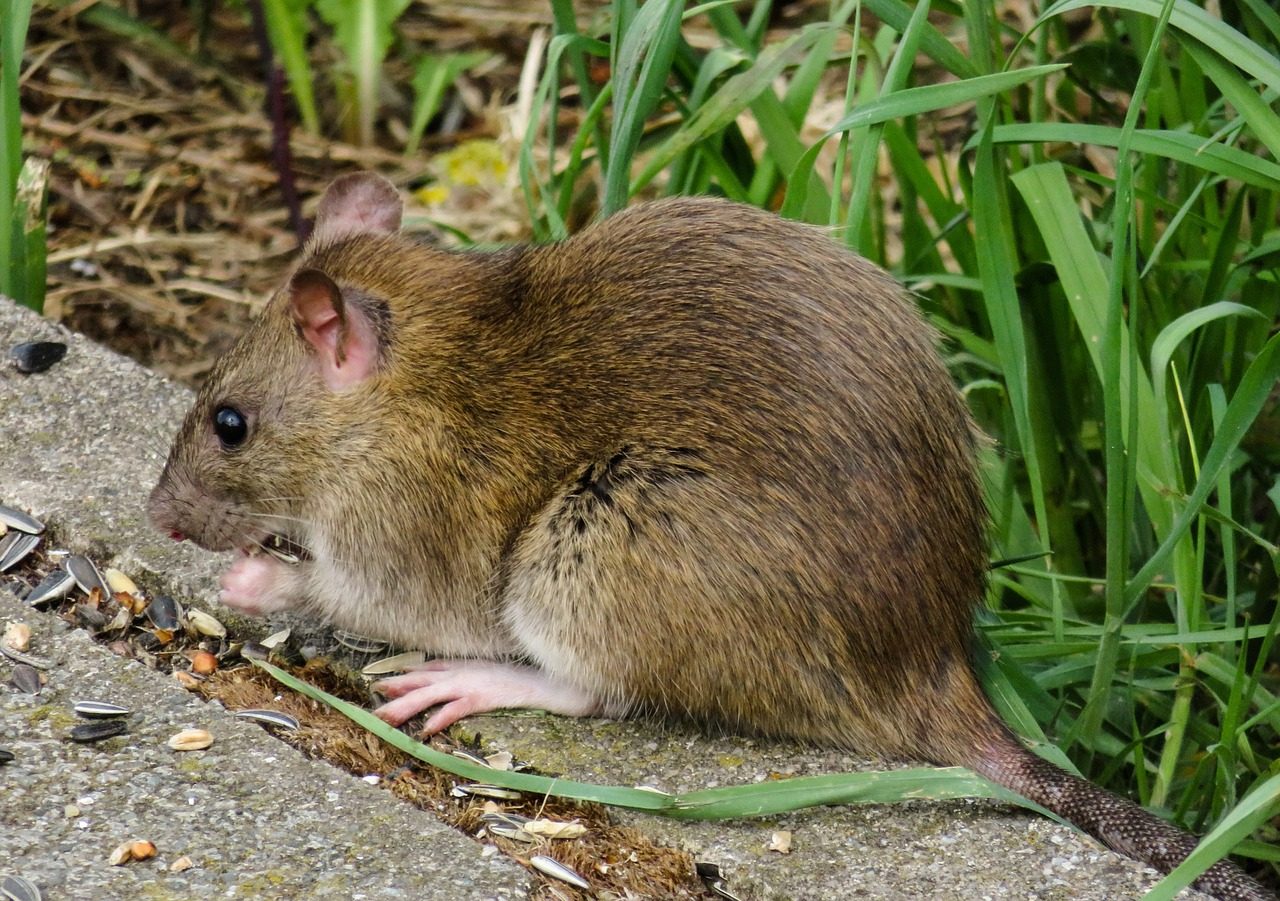
As rats move around your house, they will shape a path that they will be following. A rat makes noises that take a definite design. Another sign that can indicate mice or rats have invaded your roof and walls is the existence of rat droppings and urine in your house. The smell of their urine is usually very pungent. If you notice cardboard boxes, food packaging that has been chewed up, or sounds heard habitually at night (because rats are night creatures), then you have rats or mice in your home.
Bats
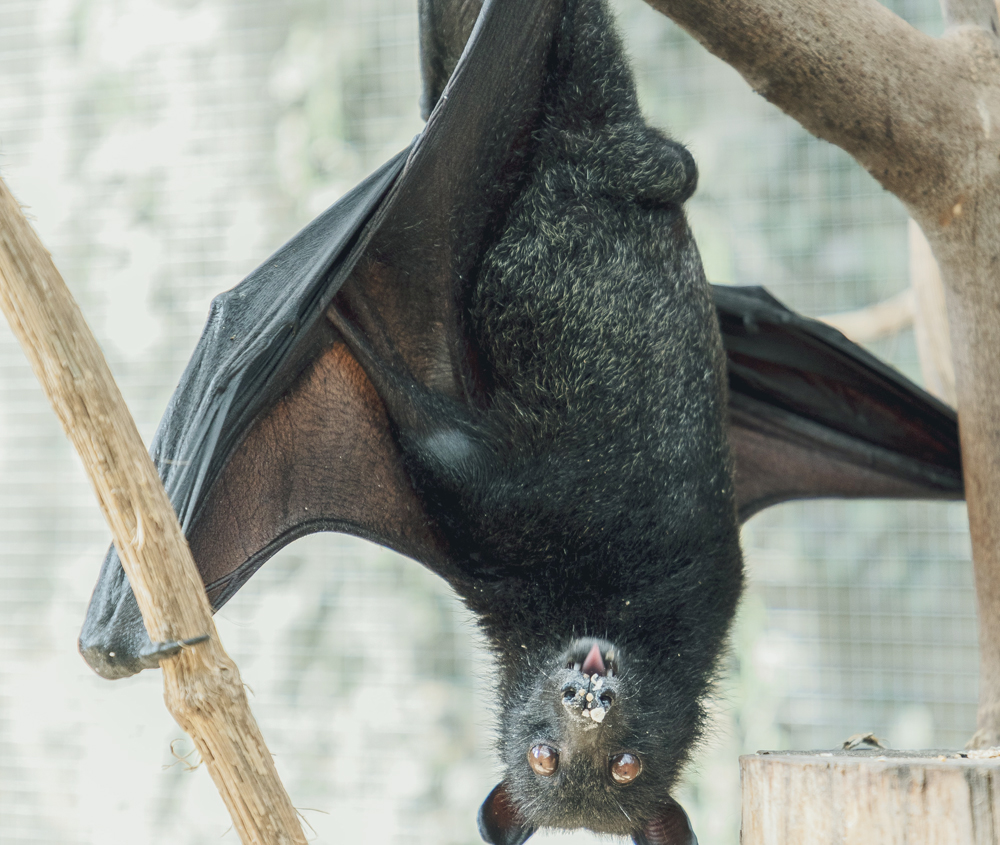
These nocturnal creatures are active at night and sleep during the day. The fact that they fly makes them even scarier. They are usually found in the attic or other parts of the home. They don’t come alone but carry a mass of terrible viruses with them. It might be hard for you to tell you to have bats in your home because they don’t make much noise. By the time you hear their noises, know that there are several of them already there.
Possums
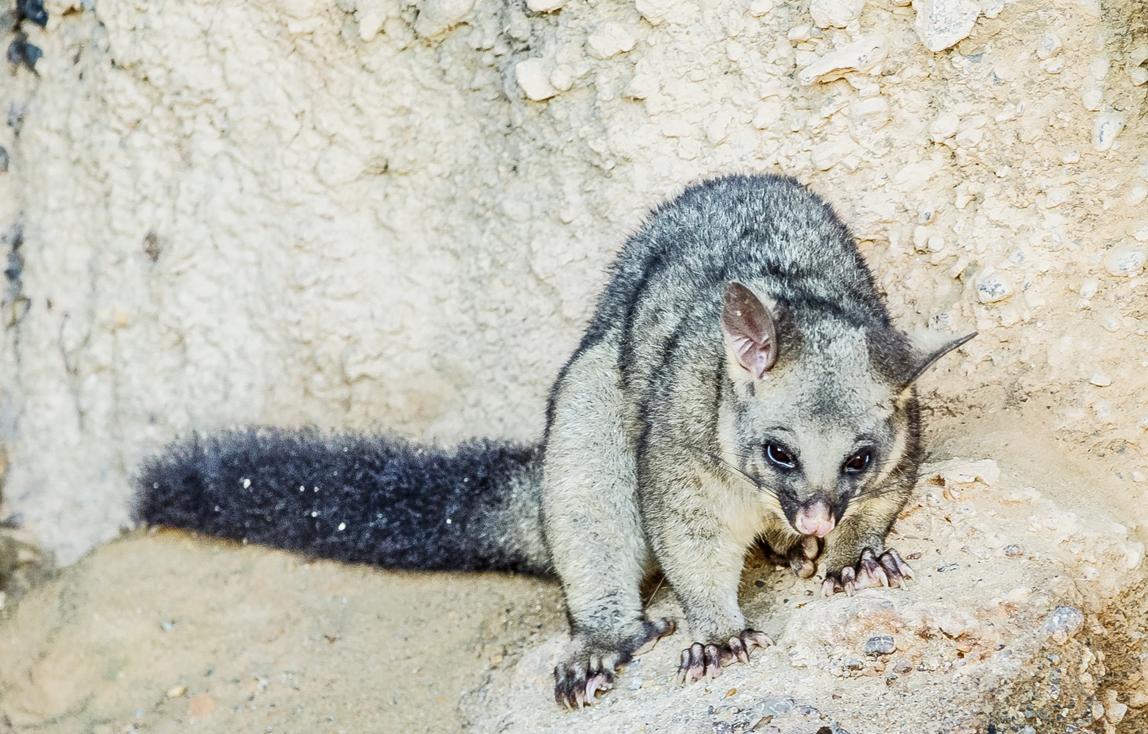
Possums might be too big to fit in roof spaces or walls of your house. However, tiny or younger possums can make their way through holes and get stuck in your cellar or other inner areas of the home. If you have a possum infestation, you will likely hear possum sounds.
Reasons To Check The Scratching Noise In The Wall
Do not ignore scratching noises in your roof spaces or walls, mainly if they occur during the night. It could be a result of rodent infestation, which could lead to severe damage to your property. Some of the reasons you need to check the scratching noises in your walls are listed below.
- Pests wreak havoc: Many rodents will chew up wires, wood, and pipes, wreaking a lot of havoc on your roof spaces or inside your walls. This could severely damage your property, and it will cost you an arm and a leg in terms of repairs and replacement. In the worst-case scenario, once the electrical wires have been exposed, they could cause a fire burning your house to the ground.
- Disease spreaders: Animals like birds usually have fleas. So if you have birds in your roof space and it is not taken care of, they will likely spread the fleas and possibly viruses. Rodents transmit all forms of germs, bacteria, and viruses. Faeces and urine from pests can draw severe bug invasions bringing in other forms of distress.
- Odour: Apart from the awful smell of rodents droppings, the decomposing carcasses of rodents are worse. So if you suspect that you have an invasion, especially if you hear scratching noises, it is time to get in touch with pest control companies and try to get a solution before it is too late.
Solutions And Prevention Of Rodents In Walls
Once you can pinpoint where the scratching noises are coming from, be it your walls or roof spaces, you need to decide what to do next. Several options are available when you want to deal with the creatures that have made your home their home:
Do-It-Yourself Methods
Many products are available on the market that assert to fast and painlessly solve pest-associated problems. There are different repellents, pepper-based products, hook and booby traps in other forms and dimensions. However, if you aim to get rid of these creatures for good, this might not work out well.
Otherwise, companies that specialise in pest-controlled services would be non-existent. These methods should only be used as a temporary solution as a more permanent solution is being sorted. No solution will 100% permanently resolve this problem. The most significant way to tackle this problem is to prevent the creatures from invading your home.
Prevention of Rodents
Listed down below are some easy ways that can be followed that will reduce the chance of stray animals from getting into your house:
- Drain all stagnant water around your house. When these animals see a pool of water, they will most likely come to have a drink. Also, this is an ideal breeding place for bugs. So to prevent this, avoid leaving a pool of water anywhere around your compound.
- You probably are aware that animals move around looking for food and water. Since you have been warned about the dangers of stagnant water, you must keep food out of the way. Once these animals get a source of food, they are bound to come back and look for a way to live in your home. Appropriately dispose of garbage.
- Check around your property and compound and find gaps that could quickly act as doors for these pests. It is essential to securely block these entry points before these animals get into your ceiling and start crawling around. It is better to prevent them from getting in than calling a professional to eradicate them.
- You can also install a wire mesh to shelter your chimney, which will keep squirrels from getting into the house.
These are just a few of ways to keep pests away from your home. However, these creatures are usually agile and sneaky if they want to get to your cellar; deterring them, to begin with, is not easy.
What Do You Do If the Pests Are Already In the House?
The only solution available if these rodents have already made themselves at home in your house is to call in the experts. These professionals will remove this problem in a secure, humane, and well-organised way.
The experts will know how to deal with the wildlife living in your house. This process is crucial and intricate. The experts will:
- Ensure the creatures are removed securely and gently.
- Do a thorough inspection and check all areas that could be exposed.
- Your house is made safe from upcoming infestation. This is through well-known animal prevention procedures.
You might hear some noise in the roof a couple of times even after the issue has been sorted. Do not fret! Listen to the noise for a few days and see if it is persistent. Your resident animal elimination and prevention team in Australia will decide the perfect procedure to follow to securely and gently remove the wildlife.
-
Solutions For Termites In The House
September 1, 2021
Termites belong to the following four insect classifications: Phylum Arthropoda, Class Insecta, Order Isoptera and Family Kalotermitidae. There are more…
Table of Contents
Termites belong to the following four insect classifications: Phylum Arthropoda, Class Insecta, Order Isoptera and Family Kalotermitidae. There are more than 2 thousand species worldwide with at least 40 of these found throughout Australia; each has their own distinct characteristics and measurements but typically sit between 0.635 – 1.27 cm in length. Despite these differences, most appear soft bodied with straight antennae.
Termite infestations are a silent cause of property damage. The insects may be hiding out in the home ruining it without any immediate sign that they’re there. They are often referred to as the “silent destroyers” because of their ability to sneak into the home and begin their destruction unnoticed.
A termite infestation can really wreak havoc on a home or property before the owner knows what’s going on! Many homeowners don’t even notice until termite colonies grow large enough to start taking chunks from walls or close off plumbing pipes so water doesn’t go anywhere near them anymore.
What Is The Evidence Of Termite Infestation In The House?
Termites are one of the most destructive pests in Australia – and with 20 different species able to chew through solid wood anywhere in or around the home, it pays to know the signs of an infestation before they spread too far. The following are the signs to look at to detect house termites.
1. Floor And Ceiling Damage
Although they mostly eat wood, termites are not picky when it comes to what’s on the menu. They can do serious damage in areas such as laminated floors and ceiling beams without even leaving a trace of their existence behind! If there are spot blisters, cracks or sags on any of these surfaces, there’s a high chance that termites are there.
2. Mud Tubes
Termites are notorious for infiltrating homes, and they often have the upper hand because it is difficult to spot their mud tunnels. Though these structures can be made of dirt or termite droppings, Australia’s most common subterranean termites require special shelter once they emerge from the ground; one way to notice a possible infestation is when the home starts showing tell-tale signs that there could be issues around foundations like concrete cracks in walls and floors which should not normally exist if properly maintained by professionals.
3. Cracks On Paints And Wall Plasters
Termites can cause major structural flaws and paint damage to the walls of a home. Damage often looks like minor water stains, but is actually a serious issue requiring immediate action for repair. This type of termite infestation causes a “bubbling” or ‘honeycombing’ effects on the wall’s surface as they eat away at timber within interior. They also make walls structurally unstable and cause cracks in any existing paints or pastes applied by homeowners before their discovery!
What Are The Things That Attract Termites To A Home?
1. Keeping Piles Of Wood Around The House
Many people who collect and burn firewood in the home like to keep their wood piles near the house, but this can be a problem because termites love infesting these stacks of wood. It’s best to have them raised or away from the home’s foundation so that they don’t get into it.
2. Tree Stumps
Tree stumps are a prime location for termites to begin an infestation on a property. They can easily become soft and moist as they rot, which is like a “welcome home” sign for these pesky pests. They will happily live in the dead wood that’s right outside of their new host’s entrance door! This means the homeowner needs to protect the property against this pest by removing tree stumps from around the house immediately after cutting them down so they don’t have time to get cozy before being rendered useless.
3. Roofs
Roofs can serve as an entry point to a property. A low-hanging roof with branches touching it might be the perfect opportunity for their invasion. If water cannot drain easily from clogged gutters and other areas around the home’s exterior, then there will always be an ample supply available to feed these sneaky invaders.
4. Mulch
Mulch is a great resource for many gardeners, but it can also be a termite’s smorgasbord. Not only that, mulch soaks up water very quickly and provides a much more appealing home to any pesky insect looking for food. If mulch is not covered with something like plastic or wood chips, then bugs will find their way in through the cracks on the walls and start infesting them within days!
What Should Property Owners Do When There Are Termites In The House?
If the presence of termites is detected in the home, do not disturb them. Avoid treating them with regular household fly sprays. Ignore these critters and their workings at all costs- touching will only make matters worse! Termites have survival instincts which allow them to feel disruption and move to another spot while continuing the damage they were causing on the house beforehand.
Do not panic if you have already sprayed or used another pest control technique on the termites. Simply seal them up with tape, and do not disturb their workings in any way. Next, contact a pest control team to organise a full termite inspection on the property. The termite experts will come and inspect all the areas in and around the property that are more vulnerable to infestation with these pesky creatures!
By the time they’re done with this inspection, a full report of their findings from the termite test will specify areas at high risk for future infestations. They’ll then use the most effective termite control method to not just kill these pesky creatures in one area but eliminate all colonies including queens which could be 100 metres away from the house! Not only can the professionals install termite barriers against future infestation, but also provide aftercare services should there ever be an issue again – they are always ready to help!
How To Get Rid Of Termites In The House
1. Termite Baiting
Termite baiting is a technique used to help get rid of termites in the home. It involves applying what are known as Bait Stations around the affected area and has been shown to be very effective for keeping or controlling those pesky little pests!
2. Termite Barriers
One of the most effective ways to control termite problem is with a barrier. Termite barriers can be physical barriers or chemical barriers. Chemical termite barriers use a liquid chemical substance to keep the pests away from the property. Physical barriers on the other hand involve applying a tough, durable sheet to the perimeter and around penetration points. This prevents termites from entering the home by preventing them from being able to slip through cracks in foundation concrete slabs during construction.
Conclusion
Dealing with termites in the home or any other property can be frustrating. This is because as little and tiny as these pests are, they are capable of causing huge destruction within a very short time. For this reason, property owners have to pay close attention to the state of a property and ensure that it is termite-free. When evidence of termite activity is detected around the house, the best thing to do is to contact a reputable pest management company.
-
Top 5 Signs I Have Termites
September 1, 2021
Termites have a reputation for causing a lot of damage to homes. With a reputation to uphold, termite damage is…
Table of Contents
Termites have a reputation for causing a lot of damage to homes. With a reputation to uphold, termite damage is one of the leading causes of home damage in Australia today. Termites can cause damage by eating through wood, which can lead to structural damage and significant repair bills for homeowners.
Termites are destructive pests that can cause considerable damage to homes and other structures. Termite identification is difficult because they can be found in various locations and unidentified termite species often look similar. You should also watch out for swarmers coming out from around your house because this is a distinct sign that there may be a termite infestation nearby.
What Are Drywood Termites?
Drywood termites are termites that live in grass and other organic matter. The termites make tunnels in the wood that contain food. Drywood termites usually feed on wood that is in the form of cellulose. Drywood termites eat different types of wood, with softwoods (like maple and oak) being favored by drywood termites.
Termites will make their nests in the soil and leave the tunnels to go get food before returning to the rooms or galleries built adjoining the tunnels. Drywood termites favor hardwoods (like cypress). Termites make their nests in the wood and navigate the tunnels to get to food sources or rooms known as galleries on the other end of the wood tunnels. The drywood termite eats roots. So a hardwood tree planted near a softwood tree is likely to be eaten.
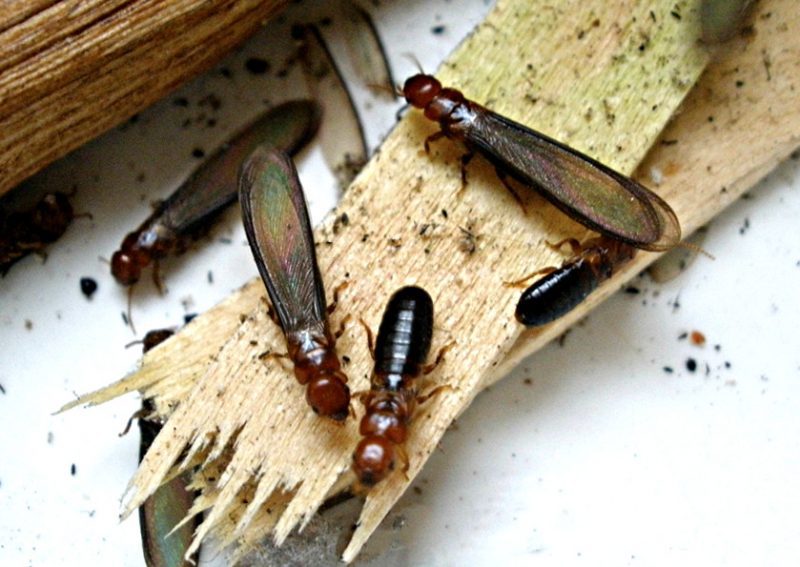
Drywood Termite Signs
When you think you may have a termite infestation, you need to act fast to get rid of them. There may be nothing to be concerned with; however, it could be time to call in a trusted professional if you see any of these signs.
- An infested tree, branch, or utility pole
- Minor stains on the outside of a home or yard that could be termite droppings
- You have small cracks in your doors and walls
- Broken ceilings, siding, or any other major woodwork surfaces in your home that looks like it has been burned in a fire
How Can I Check If Termites Are Present?
Termites in walls can be hard to detect and can happen to any kind of building, but there are some tell-tale signs on how to spot termites to make things a bit easier. So, how do you check for termites in walls and other areas of your home? Firstly, termite droppings near your home are one indication that you might have termites. So, when looking for termites signs, you should check out these common indicators of a termite infestation.
- The most noticeable sign is the presence of mud tubes. These are dark-colored tunnels that termites construct on the ground to reach their food sources. When a person is inspecting a home or other building, they will first search for these tunnels and be on the lookout for piles of wood chips so they can check them as well.
- Piles of wood chips are also an indication of termite activity. These piles will be located close to a structure. The most common areas are near a porch railing or just outside the foundation alongside the house’s exterior walls. Other indications include swarming insects, such as ants and wasps that hover around drywood and/or moist areas near it.
- So, how do you know if you have termites? To see if you have termites, you should look for wood that has been chewed away, live termites, or wings left behind from flying termites.
- You may also be able to find out if you have drywood termites signs by looking at the size of the holes they make in walls or floors.
How To Know If You Have Too Many Termites
Termites are a common household pest. They can be found in most areas throughout Australia, with the most common termite being the subterranean termite. The most prevalent sign of a termite invasion is small piles of sawdust or mud called frass.
Close examination may reveal either small holes or larger ones in drywall, wood beams, furniture, and other surfaces where termites have been eating away at the wood. Termites are terrible, and they destroy your home, which can cause you to have to move out. They can also be dangerous to your home because they can start fires caused by chewing on wires that are unprotected.
Signs Of A Termite Infestation In Houses
The most common symptoms of a wood termite infestation include:
- Wood chips on wood beams on the top floor of the house.
- Soft spots in wood furniture, such as drawers and knobs.
- Sawdust piles on the corners and baseboards of a home, which have spread out in odd directions.
- Thick dirt-covered piles of wood and debris near the base of a wooden fence.
- The smell of mildew, ammonia, or sawdust on freshly cut wood. Or the smell of a new floor.
Signs Of Termites In Trees
Most insects inside trees eat the cambium layer of the actively dividing cells between the wood (xylem) and the bast (tissues). While most feed on bark, others, such as leaf-cutter termites, bore into the wood. The symptoms are very similar. You will likely see evidence of a Termite infestation in your trees. If you have any of the common signs below:
- Red patches on the trunk
- Giant holes
- Black spots on the bark
- Fruit drop
- Suspended grub larvae
- Pile-like masses of sawdust or dust
How To Get Rid Of Termites
Termites are a hassle to get rid of. They are built to last. So, the longer they remain, the harder it is to eradicate. All you can do is prevent the infestation from becoming more serious.
Termites are stubborn pests. They can infest your home for several years at a time. Even though you might have noticed small piles of frass, it might take a professional termite exterminator a week or two to detect the infestation and get rid of them. Fortunately, you can get rid of termites with some low-cost methods.
However, there is no approved cure for termites and no method of treatment that can guarantee they won’t come back, but there are many practical measures you can take to stop the spread of termites in your home.
- Using a termiticide on your termites will cause them to die and prevent them from breeding. Use a safe, nontoxic product to kill all the termites.
- Inspect the area to see if you can see any of the mounds, then spray the perimeter. This will discourage them from making more mounds.
- Termite-proof your home by removing clutter that can attract termites.
- Clean and inspect chimneys, roof beams, attic spaces, and holes.
- Protect exposed wooden structures from termites.
- Make sure your home has adequate drainage. Periodically inspect your sump pump and drain pipes, which are often the source of problems in a home, and get any additional drain pipes (which might be underground) covered.
As a homeowner, you are responsible for preventing the spread, so what do you do if you have termites? You can make a huge difference by doing a little bit of each of the suggestions listed above.
There are a few treatments that you can use at home, but you need to work with a professional, in most cases, to prevent the infestation by termites from spreading any further. If you do find out that your home has termites, your first step should be to get a complete termite inspection.
